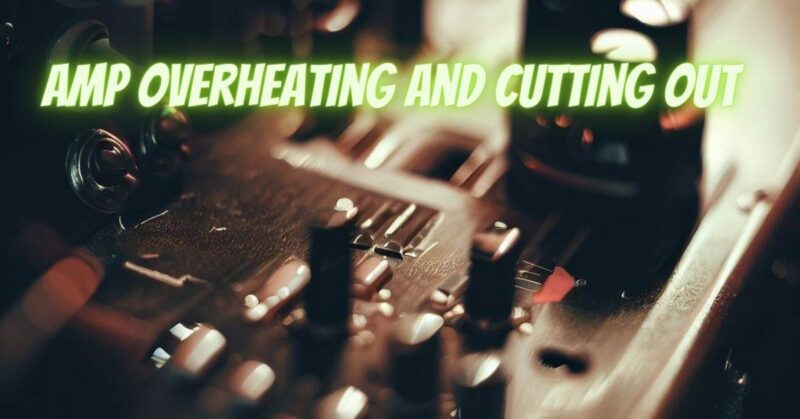Amp overheating and cutting out is a frustrating experience that can disrupt your audio enjoyment and potentially harm your equipment. Understanding the reasons behind this issue, as well as effective solutions and preventive measures, can help you keep your amplifier running smoothly. In this article, we’ll delve into the causes of amp overheating and cutting out, steps to address the issue, and strategies to prevent it from happening.
Causes of Amp Overheating and Cutting Out:
- Poor Ventilation: Inadequate airflow around the amplifier prevents heat dissipation, causing the internal components to overheat and triggering a protective cut-off mechanism.
- Overloading: Pushing your amplifier beyond its power limits for extended periods can lead to excessive heat generation and subsequent cut-outs.
- Impedance Mismatch: Connecting speakers with incorrect impedance ratings can strain the amplifier, leading to overheating and automatic shutdown.
- Dust Buildup: Dust accumulation on heat sinks, vents, and internal components obstructs airflow, contributing to overheating.
- Faulty Components: Damaged or malfunctioning components within the amplifier circuitry can cause abnormal heat generation and cut-outs.
- Ambient Temperature: Amplifiers operating in high-temperature environments are more prone to overheating and shutting down.
Solutions to Address Amp Overheating and Cutting Out:
- Proper Ventilation: Ensure your amplifier has adequate space around it for proper airflow. Avoid placing it in confined spaces or stacking other equipment on top of it.
- Cooling Accessories: Use cooling fans or external cooling solutions to improve heat dissipation and maintain optimal operating temperatures.
- Impedance Matching: Ensure your speakers’ impedance matches the amplifier’s specifications to prevent strain and overheating.
- Overloading Avoidance: Avoid consistently driving the amplifier at maximum power levels for extended periods. Respect the amplifier’s power limits.
- Regular Cleaning: Periodically clean dust and debris from vents, heat sinks, and internal components to maintain airflow.
Preventive Measures to Avoid Amp Overheating:
- Proper Placement: Position your amplifier in a well-ventilated area with sufficient clearance to allow airflow.
- Cooling Solutions: Invest in amplifiers with built-in cooling mechanisms or use external cooling accessories.
- Correct Speaker Impedance: Match your speakers’ impedance to the amplifier’s requirements to prevent excessive current flow.
- Maintenance Routine: Incorporate regular cleaning and inspection of your amplifier into your audio system maintenance routine.
- Conservative Usage: Avoid prolonged high-volume sessions that strain the amplifier and generate excessive heat.
Amp overheating and cutting out is a common issue that can be addressed and prevented with proper understanding and maintenance. By identifying the causes, implementing effective solutions, and following preventive measures, you can ensure your amplifier operates within safe temperature ranges and delivers consistent audio performance. Regular care, attention to ventilation, and responsible usage practices are key to maintaining your amplifier’s health and enjoying uninterrupted audio enjoyment for years to come.


